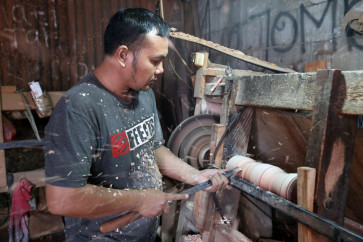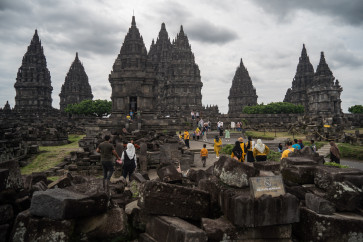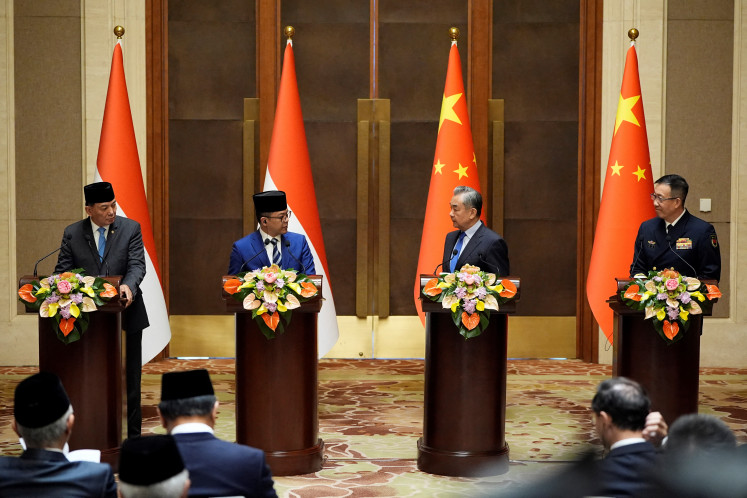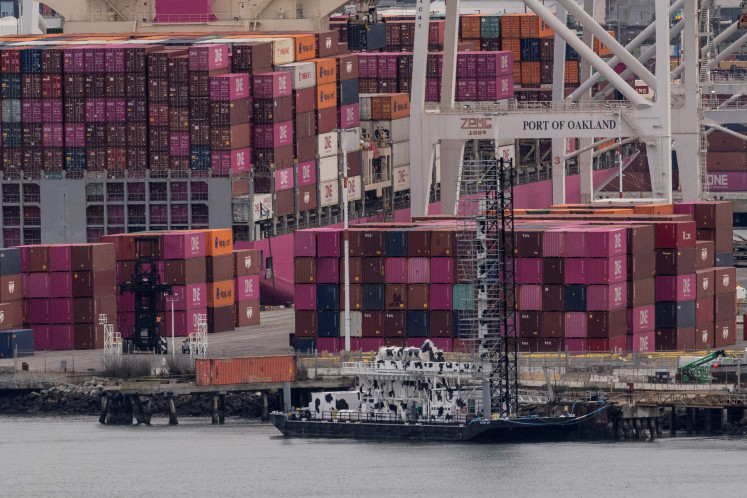Boeing ready for US-RI Osprey deal
Change text size
Gift Premium Articles
to Anyone
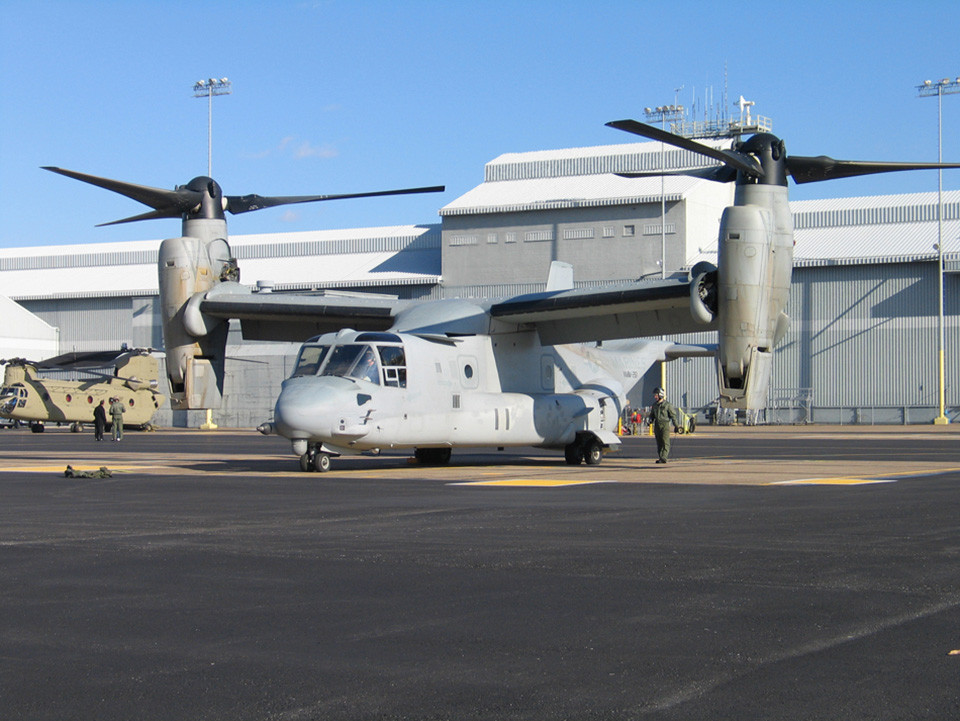
D
efense and aerospace giant Boeing said it was looking forward to working closely with the United States and Indonesia to finalize a possible US$2 billion deal for Osprey tilt-rotor aircraft.
“Congressional notification is an important step in the United States’ Foreign Military Sales [FMS] process, so we’re pleased that a potential V-22 acquisition by Indonesia has entered this phase,” Boeing said in a statement to The Jakarta Post dated July 15.
“Currently, the US military is buying the V-22 under the Multiyear Procurement III [MYP III] contract. Completion of this sale in 2020 will allow Indonesia to receive the MYP III pricing already negotiated by the US government for its aircraft.”
An agency of the US Defense Department, the Defense Security Cooperation Agency (DSCA), announced on July 6 that the US State Department had “made a determination approving a possible Foreign Military Sale to the Government of Indonesia of eight MV-22 Block C Osprey aircraft and related equipment for an estimated cost of $2 billion”.
“The Defense Security Cooperation Agency delivered the required certification notifying Congress of this possible sale today,” the DSCA said in a statement dated July 6.
After the DSCA announced the US State Department’s approval, many in the Indonesian defense establishment said they were unaware of any plan to acquire Osprey. The DSCA announcement of an FMS, however, can only be made after a letter of request is sent by a potential buyer.
In an FMS, a potential buyer negotiates with the US government instead of with defense contractors. One advantage of this method is that the purchase can be included in a US military procurement program that is already underway, often reducing the price for the buyer and increasing interoperability with the US.
Another path to acquiring US primary weapons systems (Alutsista) is through direct commercial sales, in which a foreign buyer negotiates directly with a defense contractor.
In its statement, Boeing identified the Indonesian Army as the Osprey’s potential user.
“The V-22 would enable the Indonesian Army to reach those areas and rapidly respond to crises across Indonesia and the region at large with its own organic aviation assets,” the company said.
“Bell Boeing has been in ongoing discussions with the Indonesian government and Indonesian companies to develop the best possible approach to address requirements pertaining to this Foreign Military Sale in support of TNI-AD and local industry.”
The Osprey was designed and is manufactured jointly by Boeing and helicopter maker Bell.
“The Bell Boeing V-22 has speed, range and vertical lift capabilities unlike any other production aircraft, making it the ideal aircraft for operations across Indonesia,” said Boeing.
“The tilt-rotor’s unique ability to reach areas inaccessible by airplanes while traveling at twice the speed of helicopters is a force multiplier in any type of military operation.”
When asked on Friday about Boeing identifying the Army as the branch of the military that would be using the Osprey, Army chief spokesman Brig. Gen. Nefra Firdaus said he was not aware of the possible procurement of the Osprey.
Separately, Gita Amperiawan, director of technology at state-owned aircraft maker PT Dirgantara Indonesia (PT DI), said there had been no deals on industrial cooperation with Boeing in regard to the possible Osprey deal.
“However, we did sign a memorandum of understanding with Boeing in August 2018 during the visit of then-defense minister Ryamizard Ryacudu to the US,” he told the Post on Thursday.
“We signed a joint development [agreement] on manufacturing technology, maintenance, support, training and certification.”
Gita added that he wanted to develop engineering work packages with Boeing, in which Boeing would pay PT DI employees to work on some of Boeing’s projects both at Boeing’s facilities in the US and at PT DI’s facility in Bandung, West Java.
“This way we can really learn the process and gain the experience and know-how,” he said.
The participation of local industry in arms manufacturing is mandated by Law No. 12/2016 on the defense industry, which stipulates that all Alutsista should be procured locally.
Foreign arms can only be purchased when the local defense industry cannot produce the required Alutsista. Such procurement must be done in cooperation with local defense firms.
The DCSA’s announcement does not necessarily mean that Indonesia will get the Ospreys soon. The agency will have to get the US Congress’ approval within 30 days of the announcement. If there are no objections from Congress, the sale can move forward to contract signing.

